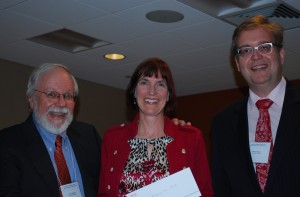Volume 21 of the Goethe Yearbook is well on its way. It contains eleven original articles that reflect the diversity of our society: there are contributions by several generations of German scholars, including pieces by David Wellbery and Katharina Mommsen, as well as innovative articles on women writers (Unger, Günderode) and several fascinating interdisciplinary pieces, ranging from an analysis of illustrations of Goethe’s works to a discussion of contemporary psychological and medical theories of ill humor in relation to Goethe’s Werther and an economic reading of Goethe’s Faust. In addition, the volume features sophisticated theoretical approaches to Goethe’s works, including an article on concepts of space in Alexis und Dora and one on notions of sacrifice in Faust. Finally, there is a study of Goethe reception around 1900 and a discussion of Albrecht von Haller’s works. We would like to use this opportunity to express our gratitude to Stanford University whose generous financial support made it possible to hire a copyeditor and thus has expedited the process considerably.We are delighted to announce that volume 22 of the Goethe Yearbook will feature a special section on Goethe and ecocriticism. The editors of this section, Dalia Nassar and Luke Fisher, invite contributions on environmental aesthetics, ethics, and philosophy, ecopoetics, Goethe’s legacy in the environmental movement, and environmental activism. Find the Call for Papers below. The deadline is March 31, 2014. Please note that, in addition to this special section, we will continue to publish contributions on all aspects of Goethezeit literature and culture in the next yearbook. We hope to hear from many of you and particularly welcome contributions by younger scholars. Please direct all correspondence to Adrian Daub at daub@stanford.edu and Elisabeth Krimmer at emkrimmer@ucdavis.edu. Manuscript submissions should follow the Chicago Manual of Style and confine themselves to less than 35 pages. For specific questions about scholarly citations, please consult the Yearbook’s style sheet.As always, the entire run of back issues is available on Project MUSE.
Adrian DaubStanford University
Elisabeth KrimmerUniversity of California at Davis
